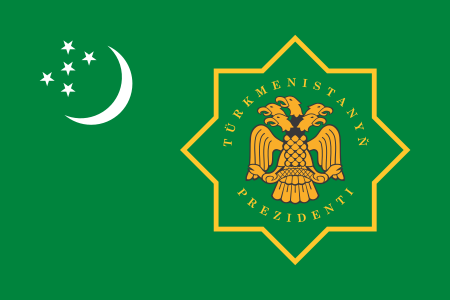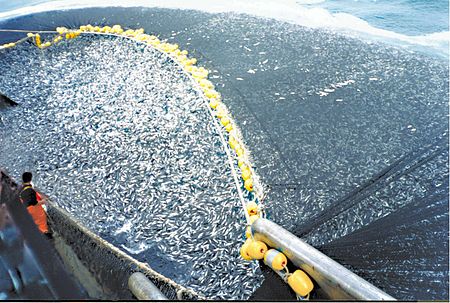Soviet nationality law
|
Read other articles:

Dutch car manufacturer A Spijkstaal van from 1984 Spijkstaal is a Dutch car company from Spijkenisse, Netherlands. It specializes in electric cars, especially trucks for industrial usage. Its electric carts operate in Amsterdam Airport Schiphol, flower auctions including the Royal FloraHolland, and military airfields.[1] Among the general public, Spijkstaal is mostly known for being the manufacturer of mobile grocery stores.[2][3][4] History A ParkShuttle bus in 2…

Japanese manga series Supinamarada!Cover of the first bound volumeスピナマラダ!GenreSports (ice hockey)[1] MangaWritten bySatoru NodaPublished byShueishaImprintYoung Jump ComicsMagazineWeekly Young JumpDemographicSeinenOriginal runJuly 14, 2011 – November 1, 2012Volumes6 MangaDogsredWritten bySatoru NodaPublished byShueishaEnglish publisherNA: Viz MediaImprintYoung Jump ComicsMagazineWeekly Young JumpDemographicSeinenOriginal runJuly 27, 2023 – presentVolume…

此條目可参照英語維基百科相應條目来扩充。 (2021年5月6日)若您熟悉来源语言和主题,请协助参考外语维基百科扩充条目。请勿直接提交机械翻译,也不要翻译不可靠、低品质内容。依版权协议,译文需在编辑摘要注明来源,或于讨论页顶部标记{{Translated page}}标签。 约翰斯顿环礁Kalama Atoll 美國本土外小島嶼 Johnston Atoll 旗幟颂歌:《星條旗》The Star-Spangled Banner約翰斯頓環礁地�…

贝内德托·贝蒂诺·克拉克西Bettino Craxi第45任意大利总理任期1983年8月4日—1987年4月17日总统亚历山德罗·佩尔蒂尼 弗朗切斯科·科西加副职阿纳尔多·福拉尼前任阿明托雷·范范尼继任阿明托雷·范范尼 个人资料出生(1934-02-24)1934年2月24日伦巴第米兰逝世2000年1月19日(2000歲—01—19)(65歲)突尼斯哈马麦特国籍意大利政党意大利社会党儿女Bobo、Stefania 克拉克西在突尼斯的墓地。 贝�…

土库曼斯坦总统土库曼斯坦国徽土库曼斯坦总统旗現任谢尔达尔·别尔德穆哈梅多夫自2022年3月19日官邸阿什哈巴德总统府(Oguzkhan Presidential Palace)機關所在地阿什哈巴德任命者直接选举任期7年,可连选连任首任萨帕尔穆拉特·尼亚佐夫设立1991年10月27日 土库曼斯坦土库曼斯坦政府与政治 国家政府 土库曼斯坦宪法 国旗 国徽 国歌 立法機關(英语:National Council of Turkmenistan) 土�…

此條目可能包含不适用或被曲解的引用资料,部分内容的准确性无法被证實。 (2023年1月5日)请协助校核其中的错误以改善这篇条目。详情请参见条目的讨论页。 各国相关 主題列表 索引 国内生产总值 石油储量 国防预算 武装部队(军事) 官方语言 人口統計 人口密度 生育率 出生率 死亡率 自杀率 谋杀率 失业率 储蓄率 识字率 出口额 进口额 煤产量 发电量 监禁率 死刑 国债 外…

此條目可能包含不适用或被曲解的引用资料,部分内容的准确性无法被证實。 (2023年1月5日)请协助校核其中的错误以改善这篇条目。详情请参见条目的讨论页。 各国相关 主題列表 索引 国内生产总值 石油储量 国防预算 武装部队(军事) 官方语言 人口統計 人口密度 生育率 出生率 死亡率 自杀率 谋杀率 失业率 储蓄率 识字率 出口额 进口额 煤产量 发电量 监禁率 死刑 国债 外…

Sustainable seafood is seafood that is caught or farmed in ways that consider the long-term vitality of harvested species and the well-being of the oceans, as well as the livelihoods of fisheries-dependent communities. It was first promoted through the sustainable seafood movement which began in the 1990s. This operation highlights overfishing and environmentally destructive fishing methods. Through a number of initiatives, the movement has increased awareness and raised concerns over the way ou…

Stephen J. Yates Presiden Radio Free AsiaMasa jabatanDesember 2020 – 22 Januari 2021Ditunjuk olehMichael PackPendahuluBay FangPenggantiBay FangKetua Partai Republik IdahoMasa jabatanAgustus 2014 – Juli 2017PendahuluBarry PetersonPenggantiJonathan Parker Informasi pribadiLahir1968/1969 (umur 54–55)[1]Partai politikRepublikPendidikanUniversitas Maryland, College Park (Sarjana)Universitas Johns Hopkins (Magistrat)Sunting kotak info • L • B Stephen …

Ця стаття є сирим перекладом з іншої мови. Можливо, вона створена за допомогою машинного перекладу або перекладачем, який недостатньо володіє обома мовами. Будь ласка, допоможіть поліпшити переклад. (березень 2012) Рейтинг свободи преси Хоча свобода преси в Україні ніколи …

ريبوز 5-فوسفات الخواص الصيغة الجزيئية C₅H₁₁O₈P[1] المعرفات CAS 4300-28-1 بوب كيم 77982 مواصفات الإدخال النصي المبسط للجزيئات C(C(C(C(C=O)O)O)O)OP(=O)(O)O[1] المعرف الكيميائي الدولي InChI=1S/C5H11O8P/c6-1-3(7)5(9)4(8)2-13-14(10,11)12/h1,3-5,7-9H,2H2,(H2,10,11,12)/t3-,4+,5-/m0/s1[1] InChIKey:PPQRONHOSHZGFQ-LMVFSUKVSA-N[1][2]…

الحرب التركية–الأرمينية جزء من حرب الاستقلال التركية مدنيون أرمن يفرون من كارس بعد الاستيلاء عليها من قبل قوات كاظم كارابكر. معلومات عامة التاريخ 24 سبتمبر – 23 ديسمبر 1920 الموقع جنوب القوقاز النتيجة انتصار تركيا والاتحاد السوفييتي تغييراتحدودية تقسيم الأراضي الأرمينية بين…

The Eagle's Prophecy First UK edition coverAuthorSimon ScarrowCountryUnited KingdomLanguageEnglishSeriesEagles of the EmpireGenreHistorical novelPublisherHeadline (UK)Publication date2006Media typePrint (hardback and paperback)ISBN978-0-7553-0117-1Preceded byThe Eagle's Prey Followed byThe Eagle in the Sand The Eagle's Prophecy is an historical novel by Simon Scarrow, published in 2006 and set in Ancient Rome.[1] Summary During the 1st century AD, a pirate squad…

Hospital in London Borough of Sutton Hospital in EnglandSt Helier Hospital and Queen Mary's Hospital for ChildrenEpsom and St Helier University Hospitals NHS TrustShown in SuttonGeographyLocationWrythe Lane, St Helier, Sutton, Carshalton SM5 1AA, London, England, United KingdomCoordinates51°22′49″N 0°11′01″W / 51.3803°N 0.1836°W / 51.3803; -0.1836OrganisationCare systemNHS EnglandTypeDistrict General HospitalAffiliated universitySt George's, University of Lond…

Coast Guard Motor Lifeboat CG-36500 Coast Guard Motor Lifeboat CG 36500 as a museum boat History United States NameCG-36500 OperatorUnited States Coast Guard Builder United States Coast Guard Yard, Curtis Bay, Maryland Completed1946 Out of service1968 StatusMuseum boat General characteristics Tonnage9.1 t (20,000 lb) Length36 ft (11.0 m) Installed power160 hp (119 kW) PropulsionGeneral Motors 4-71 diesel[1] Crew4 Coast Guard Motor Lifeboat CG-36500U.S. Natio…

Katedral TórshavnHavnar Kirkja62°00′35″N 6°46′18″W / 62.009685°N 6.771655°W / 62.009685; -6.771655Koordinat: 62°00′35″N 6°46′18″W / 62.009685°N 6.771655°W / 62.009685; -6.771655LokasiTórshavnNegaraKepulauan FaroeDenominasiGereja Kepulauan FaroeSejarahDidirikan1609Tanggal konsekrasi17 Desember 1865ArsitekturStatusAktifStatus fungsionalGereja katedralSpesifikasiJumlah puncak menara1KlerusUskupJógvan FríðrikssonDekanUni N�…

Anglo-Irish society hostess (1904–1999) Aileen PlunketHon. Brinsley Plunket in 1929BornAileen Sibell Mary Guinness1904Died1999 (aged 94–95)Known forSocialiteSpouses Brinsley Sheridan Plunket Valerian Stux-Rybar (m. 1956; div. 1965) Parent(s)Ernest Guinness Marie Clothilde RussellRelativesMaureen Constance Guinness (sister)Oonagh Guinness (sister)Edward Guinness, 1st Earl of Iveagh (grandfather)Sir George Russell, 4th Baronet (…

هذه المقالة يتيمة إذ تصل إليها مقالات أخرى قليلة جدًا. فضلًا، ساعد بإضافة وصلة إليها في مقالات متعلقة بها. (نوفمبر 2019) تيم ويكفيلد (بالإنجليزية: Tim Wakefield) معلومات شخصية اسم الولادة (بالإنجليزية: Timothy Stephen Wakefield) الميلاد 2 أغسطس 1966 ملبورن الوفاة 1 أكتوبر 2023 (57 سنة) …

هذه المقالة تحتاج للمزيد من الوصلات للمقالات الأخرى للمساعدة في ترابط مقالات الموسوعة. فضلًا ساعد في تحسين هذه المقالة بإضافة وصلات إلى المقالات المتعلقة بها الموجودة في النص الحالي. (نوفمبر 2019) كأس الاتحاد الإنجليزي 2015–16 تفاصيل الموسم كأس الاتحاد الإنجليزي النسخة 135 …

Item put around the neck of a cat A cat collar is a piece of material put around the neck of a cat. Cat collars are put on cats by their owners for identification, fashion, protection (as from fleas), restraint, or to warn off prey, and may be worn by cats that are indoor-only as well as cats with outdoor access.[1] Collar safety As of 2021, there is ongoing debate about whether standard or breakaway collars (collars that unclasp with the application) are safer, or if cat collars are saf…